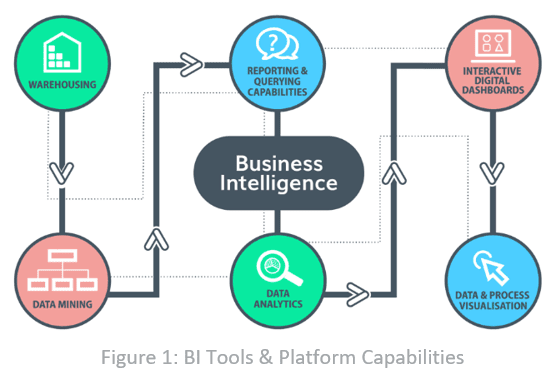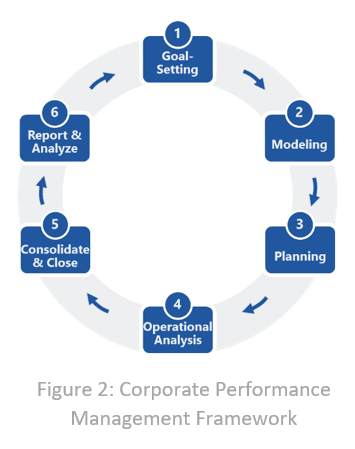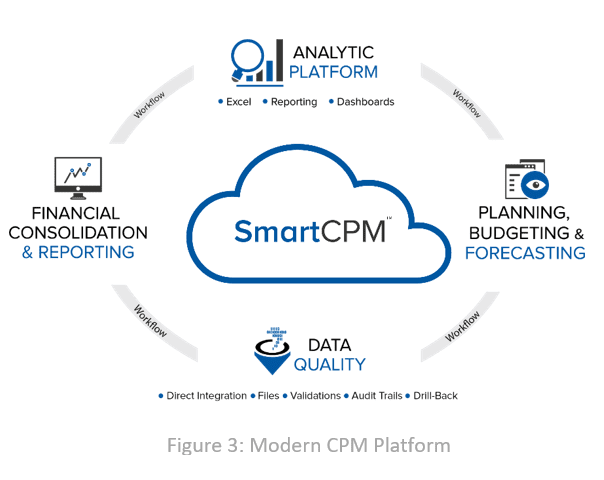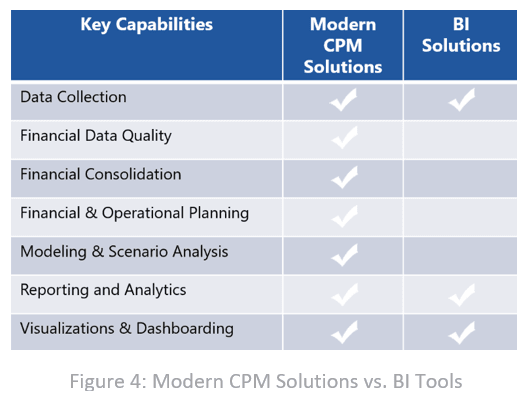Addressing FY21 NDAA & DOD Budgeting Requirements with CPM Solutions

The National Defense Authorization Act (NDAA) is one of two annual bills designed for Congress to oversee the budget for the U.S. Department of Defense (DOD). The authorization bill determines the agencies responsible for defense, establishes funding levels, and sets the policies for allocating budget dollars. And this year, the budgeting requirements create the perfect environment to deploy corporate performance management (CPM) solutions too.
The FY21 NDAA spans everything from national security spending to nuclear modernization. But the current bill specifically encourages the DOD to function better and more holistically than it has in the past – particularly in the areas of acquisition, management and budgeting.
With regard to budgeting, the bill includes numerous provisions designed to streamline work, expand decision-makers’ ability to access accurate and comprehensive data, and improve the Pentagon’s planning and budget development. Here are just a few of the key highlights of the bill and how these aspects improve existing DOD functionality:
- Expands DOD’s use of mission-based budgeting using modern data visualization tools, which will provide better visibility and facilitate better, more rapid decision-making
- Directs the Comptroller to deliver a report on the information systems integral to managing and sharing data related to the planning, programming, budgeting and execution (PPBE) process – including discrete IT systems used to manage and share programming and budgeting data throughout DOD
- Encourages the DOD to ensure its budget more accurately reflects the actual budget of each military service
- Requires the Secretary of Defense to submit an annual report on the enterprise business operations of the department, including a budget for the enterprise business operations of each defense agency and field activities
It’s pretty exciting to see the NDAA encourage DOD to leverage modern data visualization tools. It shows the DOD’s commitment to modernize its GOTS (government off-the-shelf) and legacy planning, programming and budgeting systems.
Yet DOD budget leaders must also understand the key differences between purpose-built data visualization and business intelligence (BI) tools versus modern CPM solutions.
BI Tools Offers a Lens into Data
Wikipedia describes BI as “a set of strategies and technologies used by enterprises for the data analysis of business information.” To put it more plainly, BI is mainly a set of tools or a platform focused on information delivery and typically driven by the information technology (IT) department.

Here are some key capabilities of modern BI tools and platforms (see Figure 1):
- Techniques to acquire data, such as data mining
- Tools to transform data into insights, including warehousing, query and reporting tools
- Visualizations and dashboarding, including performance reporting
CPM Helps Finance Leaders Manage the Organization
According to Gartner, CPM is an “umbrella term that describes the methodologies, metrics, processes and systems used to monitor and manage the performance of an enterprise.” The term is often used synonymously with enterprise performance management (EPM), business performance management (BPM) and financial performance management (FPM).

These slight variations aside, the concept of performance management comprises a set of processes and applications that help the enterprise link strategies to plans and execution in a continuous management cycle (see Figure 2). This process helps the enterprise achieve desired goals and objectives.
A CPM suite or platform typically includes pre-built applications and tools to address the key steps in the performance management cycle:
- Goal Setting – Defining high-level goals, objectives, critical success factors and key performance indicators (KPIs)
- Modeling – Defining business models, resources, constraints, drivers and scenarios
- Planning – Strategic planning, budget formulation & execution, rolling forecasting, payroll projections, capital planning and property planning
- Operational Analysis – Access to daily and weekly financial and operational signals and reporting for inter-period decision-making prior to the month-end reporting cycle
- Financial Close and Consolidation – Monthly, quarterly and annual closing of the books across multiple hierarchies; financial statement with crosswalk transparency; intergovernmental elimination; financial statement tie points; and account reconciliations
- Reporting – Financial reporting, including the Agency Financial Report (AFR), financial statements & footnotes and budget books; built-in visualizations and dashboarding; and MS Office integration
- Analytics – Comparing actual results to the original budget/plan and prior periods, and comparing results across departments, including via conducting a spend analysis, assessing funds availability and employing scenario analysis
CPM vs. BI: Key Differences

While evaluating plans in accordance with the FY21 NDAA guidance, DOD leaders must consider a modern CPM platform (see Figure 3) as the standard to modernize PPBE systems.
Modern CPM platforms include key capabilities designed to streamline PPBE processes. Here are just a few of them:
- A unified platform (supporting multiple CPM processes)
- On-premise or cloud deployment, including FedRAMP Moderate authorization
- Integrated analytics and visualizations
- Fast and simple upgrades
- Easy extensibility (to address specific requirements)
- 64-bit in-memory, RPA, AI, ML
- Low cost of ownership
Bringing It All Together
While BI and visualization tools are powerful, they’re not purpose-built with the financial intelligence required to facilitate PPBE processes. Rather, BI and visualization tools focus on information delivery, are driven by IT departments and are deployed for general-purpose reporting and analysis to end-users across the enterprise.
CPM solutions, on the other hand, are supported by a suite of applications or a unified platform – and these solutions are typically driven by the Finance organization to support PPBE. And in many cases, modern CPM platforms provide many of the same benefits for reporting and analysis as BI tools. In contrast, BI tools are not designed (see Figure 4) to facilitate CPM processes, such as budgeting, planning & forecasting, financial consolidation and so on.

Learn More
To learn more about how modern CPM solutions can address the FY21 NDAA’s budget modernization requirements, please download this solution brief or contact me.
Get Started With a Personal Demo


